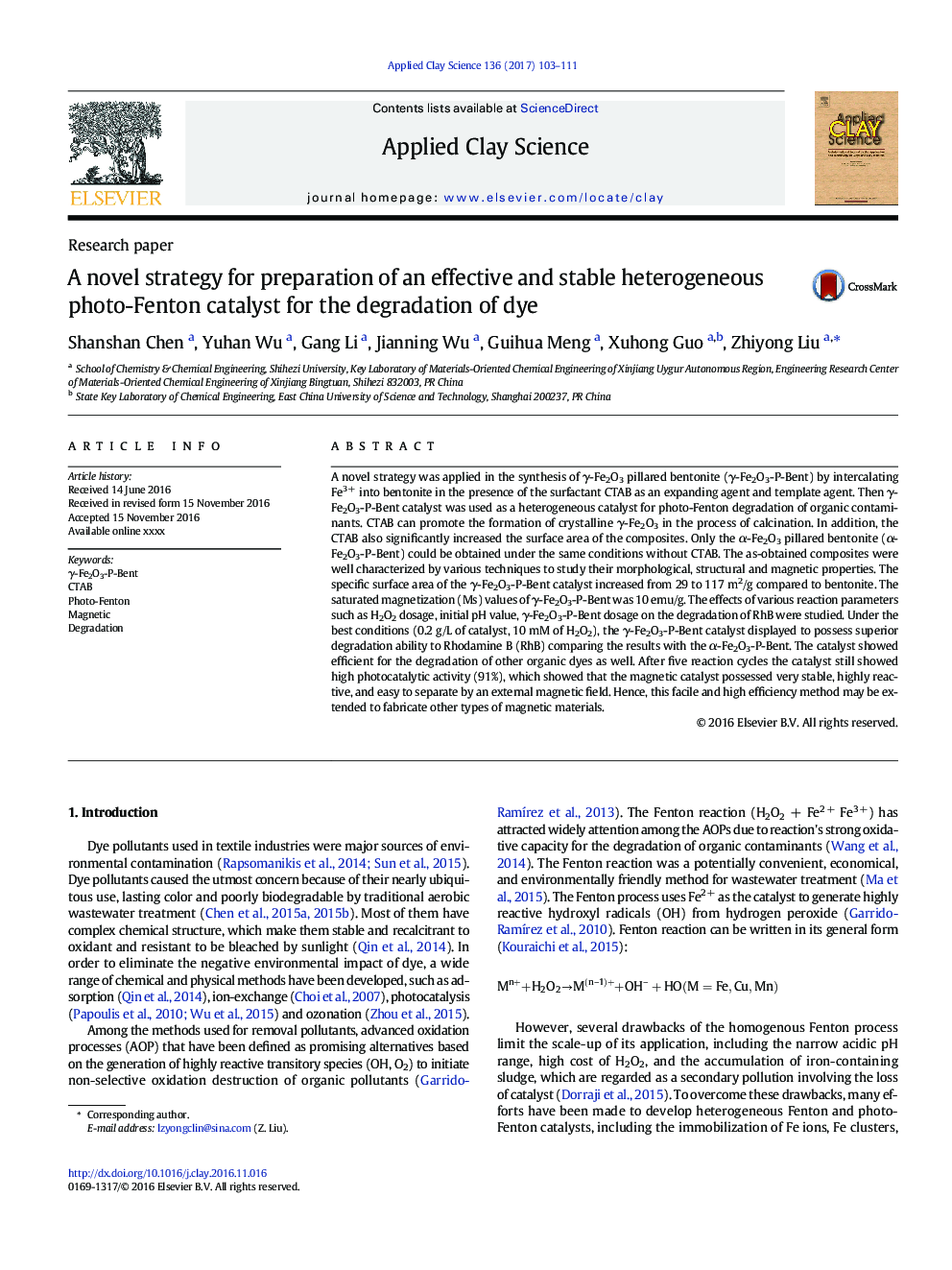| Article ID | Journal | Published Year | Pages | File Type |
|---|---|---|---|---|
| 5469103 | Applied Clay Science | 2017 | 9 Pages |
Abstract
A novel strategy was applied in the synthesis of γ-Fe2O3 pillared bentonite (γ-Fe2O3-P-Bent) by intercalating Fe3 + into bentonite in the presence of the surfactant CTAB as an expanding agent and template agent. Then γ-Fe2O3-P-Bent catalyst was used as a heterogeneous catalyst for photo-Fenton degradation of organic contaminants. CTAB can promote the formation of crystalline γ-Fe2O3 in the process of calcination. In addition, the CTAB also significantly increased the surface area of the composites. Only the α-Fe2O3 pillared bentonite (α-Fe2O3-P-Bent) could be obtained under the same conditions without CTAB. The as-obtained composites were well characterized by various techniques to study their morphological, structural and magnetic properties. The specific surface area of the γ-Fe2O3-P-Bent catalyst increased from 29 to 117 m2/g compared to bentonite. The saturated magnetization (Ms) values of γ-Fe2O3-P-Bent was 10 emu/g. The effects of various reaction parameters such as H2O2 dosage, initial pH value, γ-Fe2O3-P-Bent dosage on the degradation of RhB were studied. Under the best conditions (0.2 g/L of catalyst, 10 mM of H2O2), the γ-Fe2O3-P-Bent catalyst displayed to possess superior degradation ability to Rhodamine B (RhB) comparing the results with the α-Fe2O3-P-Bent. The catalyst showed efficient for the degradation of other organic dyes as well. After five reaction cycles the catalyst still showed high photocatalytic activity (91%), which showed that the magnetic catalyst possessed very stable, highly reactive, and easy to separate by an external magnetic field. Hence, this facile and high efficiency method may be extended to fabricate other types of magnetic materials.
Keywords
Related Topics
Physical Sciences and Engineering
Earth and Planetary Sciences
Geochemistry and Petrology
Authors
Shanshan Chen, Yuhan Wu, Gang Li, Jianning Wu, Guihua Meng, Xuhong Guo, Zhiyong Liu,
